Stardew Valley Tips And Tricks For Getting Started On Switch
Though Stardew Valley is a wonderful game, it's also guilty of throwing you in without much direction. There's no tutorial to really speak of in Stardew Valley, aside from a few quests that push you to different corners of the in-game world. With Stardew Valley launching on the Switch yesterday and thereby introducing itself to a whole new subset of players, I thought I'd put together a quick tips and tricks list that will make your opening days in the Valley go a little more smoothly.
What follows will be basic tips that anyone who has prior experience with the game will likely know, so if you've already played Stardew Valley on a different platform, you probably won't learn much. However, for the person just starting out with Stardew Valley, this guide can give some direction for the first few days, allowing you to get off on proper footing.
Watch your energy gauge closely
Nearly everything you do in Stardew Valley – whether it's swinging your pickaxe or casting a fishing line – will use energy. Some exceptions to this rule include walking, swinging your scythe or sword, and harvesting crops or picking up forage from the ground. For pretty much every other action, though, you're going to use up your limited energy.
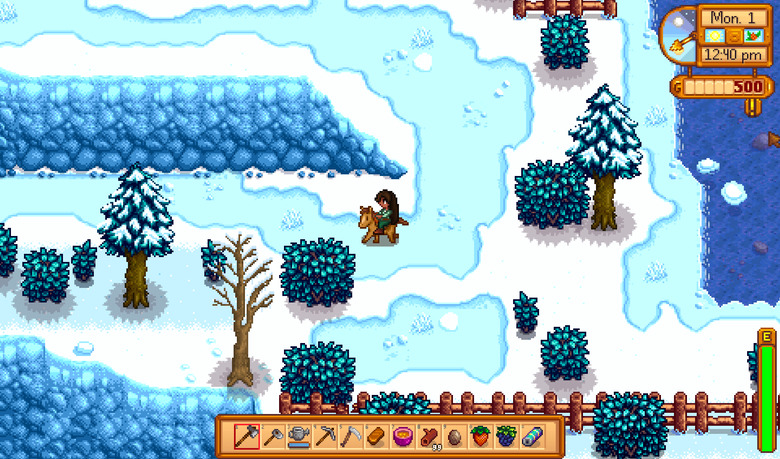
Your total energy is depicted in a bar in the lower right corner of the screen. It seems small at first, but you can actually do a lot on a full energy bar and you'll have the opportunity to expand it later on. Sleeping at night will replenish your energy, as will eating some foods.
Don't deplete your energy bar entirely if you can avoid it. When your energy bar is close to empty, you'll get an alert saying "You're starting to feel exhausted." Continue on and you'll enter an exhausted state, which slows your actions and your movement speed. Even worse is that if you go to bed exhausted, you'll wake up the next day with only a half-full energy bar. That, as you can imagine, can really put a damper on your plans for the day.
Each season lasts for 28 days
There are four seasons in Stardew Valley: spring, summer, autumn, and winter (which is obvious, but bear with me). Each of these seasons last 28 days. This is important to remember because each crop you plant takes a specific amount of time to grow, and many of those crops only grow during one season.
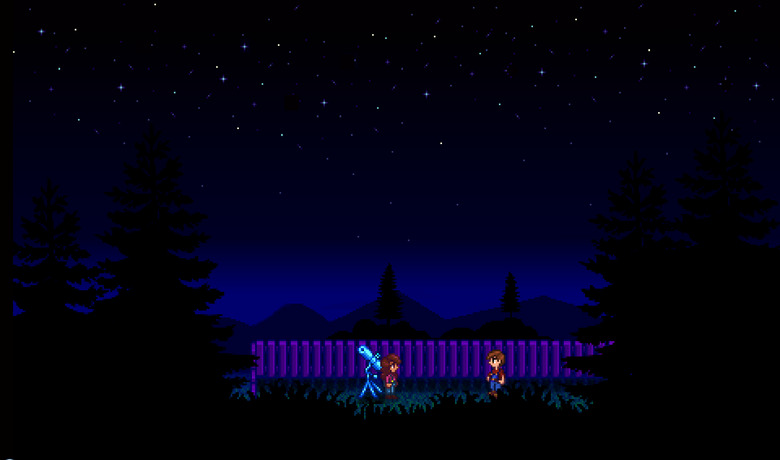
So, this means that if you plant a plot of Parsnips – a spring crop which takes four days to grow – on the 25th day of spring, you'll never actually be able to harvest them. Summer will begin on the day they would have been ready to harvest, wiping away any in-progress spring crops you had growing. Use this knowledge to plan things out in advance. Pay careful attention to the calendar and the season switch will never take you by surprise and ruin your work.
Get to know the residents of Pelican Town
When you first begin the game, you'll be given a quest that tasks you with going around and talking to all 28 residents of Pelican Town. This quest will take some time to complete, as each resident has their own daily and weekly routines. Still, it's worth it, as is talking to those residents regularly.
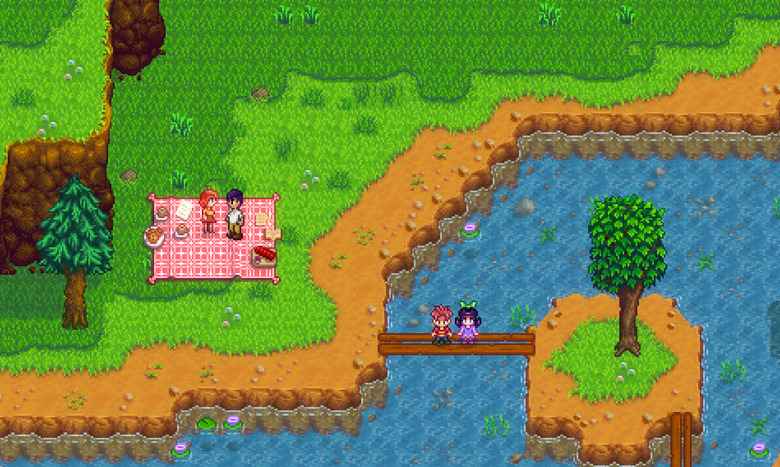
One of Stardew Valley's main focuses is building relationships with NPC characters. You can give each resident gifts and their fondness for you will go up or down depending on how much they like the item you gave them. Each character has like/dislike profiles for every giftable item in the game, and there are a lot of them. You can consult a guide to figure out which items each character likes best, but honestly, it's more fun to just give someone a gift and see how they react.
You can also get an idea of what a certain character's likes and dislikes are just by talking with them and observing their daily routines. For instance, Penny hates alcohol of any kind, while most of the other residents will be happy to receive a homemade bottle of wine. This doesn't make a whole lot of sense until you discover that Penny's mother is an unemployed alcoholic who spends most of her time at Stardew Valley's saloon, making her distaste for booze clear. Looking for these hints will make building relationships much more enjoyable than simply consulting a guide.
Use the fact that you're just starting out to your advantage
In the early stages of a new game, you're going to spend a lot of time waiting on your crops. Money will be tight until you build out your farm and grow your wealth, which means that for a while, you'll be waiting for crops to grow so you can sell them and afford more seed from Pierre's shop in town. Use this time to your advantage.
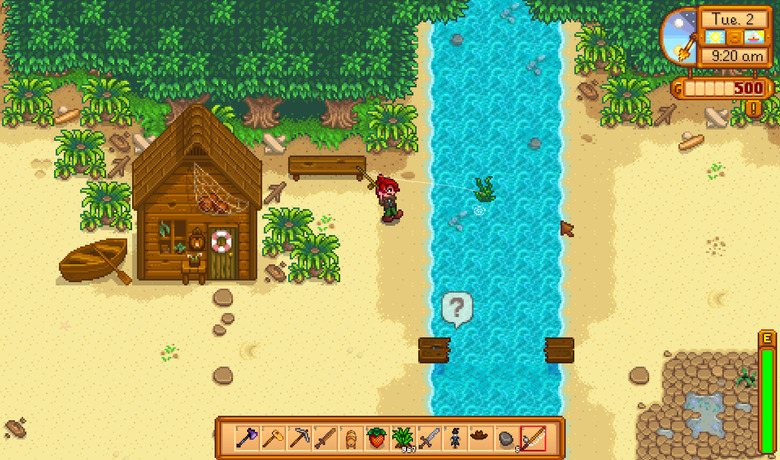
There are a variety of different skills to improve in Stardew Valley: fishing, foraging, mining, combat, and farming. Of these, farming is perhaps the easiest to level up, as you'll make most of your money from the produce you grow. When you're just starting out and you don't have a massive farm to manage, you can get a jump on your other skills by heading down to the docks (south of Pelican Town) to fish or going to the forest (south of your farm and west of Pelican Town) to forage in your free time.
Rainy days are the perfect time to upgrade your tools
Your tools will serve as the backbone of a successful farm as you play Stardew Valley. Your pickaxe, axe, watering can, and hoe will all be invaluable as you transform your farm from a run down piece of land into a money making machine. Clint, Pelican Town's blacksmith, can upgrade your tools assuming you have the right ores and enough cash, but it can be difficult to find time to upgrade them when you use each one almost every day.
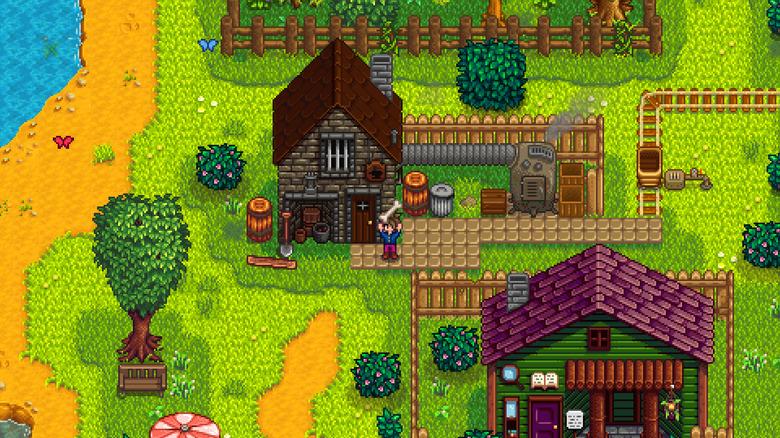
Instead of putting a halt to your plans for a couple days while Clint upgrades a necessary tool, simply wait for a rainy day to roll around. Use the television in your house to hear the weather report for the next day, and if the weatherman tells you that it's going to rain, do whatever you need to do with one of your tools and then take to it Clint's to get upgraded.
For a tool like the watering can – which you'll need to use nearly every day if you want your crops to actually grow – this is the only way to get it upgraded without waiting for winter or falling behind. You don't need to water your crops on days when it rains, and considering Clint takes two days to upgrade a tool, taking it to him when you know it's going to rain means that you'll get a better watering can without missing out on a day's worth of watering.
Sometimes the best thing to do is take it slow
Though it can be a lot of fun to maximize efficiency, new players shouldn't be so concerned with that. There is no hard end to this game – you can keep improving your farm as long as you like. If you're just starting out in Stardew Valley, the best thing you can do is play the game without worrying about maximizing profits or getting the most out of every bit of land.
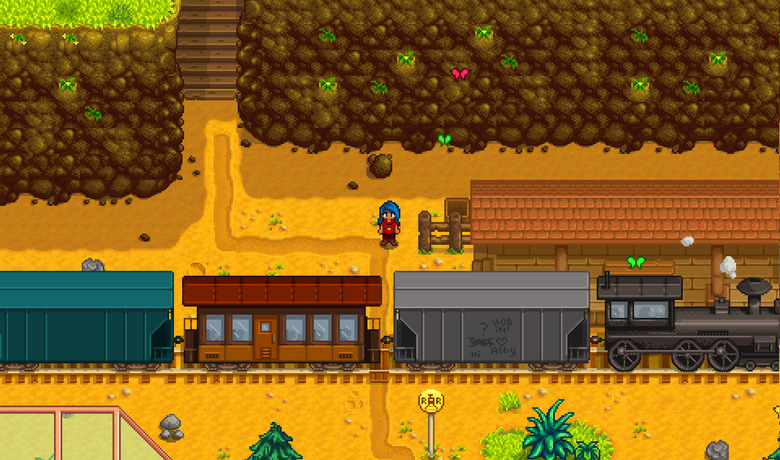
Sometimes, it's preferable to just slow down and appreciate what's happening around you. Stardew Valley is a game dripping with atmosphere, and by trying to get the min-max every minute of every day, you'll miss a lot of it. Remember to take it slow sometimes and you'll have much better experience.
Wrap-Up
In the end, the beautiful thing about Stardew Valley is that you can play it however you like. That can be a double-edged sword though, as it can leave new players without a sense of direction. Hopefully this guide helps you develop a rough plan for the early hours of your playthrough without ruining too much of the fun of discovery. What tips do you Stardew Valley veterans have for those joining the party on the Switch this week? Feel free to head down to the comments section and share them!
